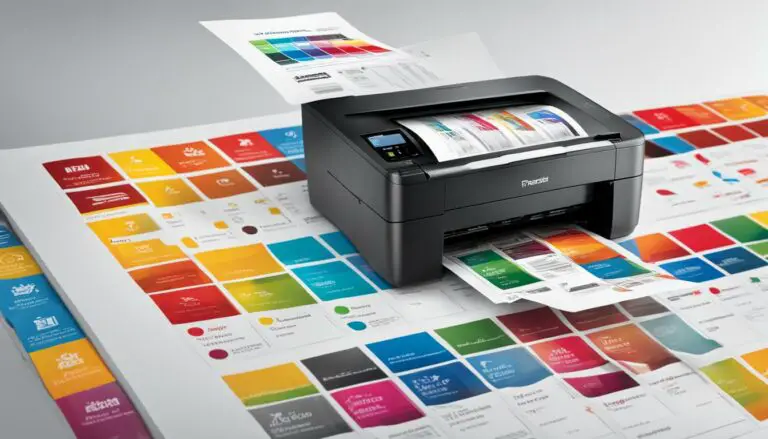Elevating Value: Our Guide to Making Expensive Choices
Originally posted on February 5, 2024 @ 12:20 pm
Welcome to our tutorial on selecting high-cost options and enhancing the worth of what you buy. In an environment where opulence, high-end, and lavish living are sought after by numerous individuals, recognizing the genuine worth of pricey items is crucial. It’s common to correlate increased prices with superior quality, believing that more expensive products are automatically superior. Yet, there’s more to consider than initially appears.
Pricing strategies, such as prestige pricing, play a significant role in shaping our perception of value. Companies leverage prestige pricing by charging premium prices to create a sense of high value. This strategy is closely tied to brand perception, as superior quality or products that add value can justify higher price points. By implementing a prestige pricing strategy, businesses can increase revenue and differentiate themselves from competitors, but it’s crucial to understand the potential advantages and disadvantages.
Throughout this guide, we will explore the concept of prestige pricing, its implementation strategies, and the importance of brand equity in ensuring long-term success. By the end, you’ll have a clearer understanding of how to make informed choices when faced with expensive options and how to elevate the perceived value of your investments.
Key Takeaways:
- The perception of higher cost equating to higher quality is the basis of prestige pricing.
- Prestige pricing relies on brand perception and justifies higher price points.
- Analyzing competitors’ pricing and offering a unique value proposition are crucial in implementing a prestige pricing strategy.
- Brand equity plays a vital role in charging premium prices and fostering customer loyalty.
- Building brand equity requires a holistic approach encompassing brand awareness, attributes, perceived quality, and loyalty.
What is Prestige Pricing?
Prestige pricing, also known as premium pricing or image pricing, is a strategy where companies sell products at high price points to convey a sense of high value to consumers. This strategy appeals to consumers interested in projecting an elevated status or a prestigious image.
Prestige pricing is closely tied to brand perception and assumes that consumers perceive more value in higher-priced products. By charging premium prices, companies aim to position their products as superior and exclusive.
Companies employing this strategy must differentiate their products from competitors and justify the higher price point with unique features or attributes. The goal is to create a perception of exclusivity and desirability among consumers.
An example of prestige pricing can be seen in the fashion industry, where luxury brands charge significantly higher prices for similar products. These brands leverage their reputation and brand image to justify the higher price points.

Perceived Value and Consumer Psychology
One of the key drivers behind prestige pricing is the concept of perceived value and consumer psychology. Consumers often associate higher prices with better quality, exclusivity, and superior performance. By setting high price points, companies can tap into this psychology and create a perception of high value in the minds of consumers.
Prestige pricing relies on the belief that consumers perceive more value in higher-priced products, as they assume that higher prices reflect superior quality or status. Companies strategically position their products as symbols of luxury and sophistication, targeting consumers who seek to project an image of wealth and success.
“By setting high price points, companies can tap into consumer psychology and create a perception of high value in the minds of consumers.”
Differentiation and Justification
To implement a successful prestige pricing strategy, companies must differentiate their products from competitors and justify the higher price point. This can be achieved through product features, unique branding, superior customer service, or exclusive partnerships.
By offering something distinct and valuable, companies can create a sense of exclusivity and justify the premium pricing. Consumers are more likely to pay higher prices if they believe they are getting something unique and superior.
Companies employing prestige pricing must effectively communicate the reasons behind their higher prices to customers. This can include highlighting the craftsmanship, materials, or design that sets their products apart, showcasing the value customers receive in exchange for the premium pricing.
Consumer Perception and Brand Image
Prestige pricing is closely linked to brand perception. Consumers often associate higher-priced products with superior quality, craftsmanship, and status. By implementing a prestige pricing strategy, companies aim to strengthen their brand image and position themselves as high-value providers in the market.
Strong brand image and reputation play a vital role in the success of a prestige pricing strategy. Consumers must perceive the brand as prestigious, trustworthy, and synonymous with luxury. This requires consistent branding efforts, high-quality products, and exceptional customer experiences.
Overall, prestige pricing is a strategic approach that relies on creating a perception of high value through premium pricing. By appealing to consumers’ aspirations for an elevated status and projecting a prestigious image, companies can drive demand and enhance their brand positioning in the market.
How to Implement a Prestige Pricing Strategy
Implementing a prestige pricing strategy can be a powerful way to position your brand as a leader in the market and command higher prices for your products. By analyzing your competitors’ pricing strategies and crafting a unique value proposition, you can differentiate your offerings and justify a higher price point.
Understanding your competitors’ pricing is essential to determine where your product stands in the market. Take note of the prices charged by similar products and assess the value they offer to customers. This analysis will help you identify the gap in the market that your product can fill with a unique value proposition.
To effectively implement a prestige pricing strategy, it is crucial to establish a brand image that sets you apart from competitors. Consider brands like Yeti, which have successfully positioned themselves as premium suppliers in the outdoor gear market. Craft a brand identity that resonates with your target audience and communicates the exclusivity and value of your products.
“Craft a brand identity that resonates with your target audience and communicates the exclusivity and value of your products.”
Increasing the perceived value of your products is key to successfully implementing prestige pricing. One way to achieve this is through targeted pricing strategies. Highlight the unique features, superior quality, and exceptional craftsmanship of your products to create a perception of high value among customers.
Offering user choice is another effective tactic. By providing customization options or limited edition releases, you can cater to the individual preferences of your customers and create a sense of exclusivity around your products.
“Offering user choice is another effective tactic. By providing customization options or limited edition releases, you can cater to the individual preferences of your customers and create a sense of exclusivity around your products.”
Intelligently constraining supply is yet another element of a successful prestige pricing strategy. By limiting the availability of your products, you create a sense of scarcity and urgency among customers, driving up their perceived value and willingness to pay a premium.
Implementing a prestige pricing strategy requires careful consideration of your competitors’ pricing, crafting a unique value proposition, and effectively communicating the exclusivity and value of your products. By doing so, you can establish your brand as a leader in the market and achieve higher price points for your offerings.
The Importance of Brand Equity
Brand equity plays a pivotal role in shaping the perception customers have of a brand and the value they associate with it. It refers to the level of influence a brand name holds in consumers’ minds and the overall worth attributed to the brand. Positive brand equity is vital for businesses as it drives revenue growth and enhances perceived value.
One significant advantage of strong brand equity is the ability to charge premium prices for products or services. When customers trust and perceive a brand positively, they are more willing to pay higher prices, believing they are getting superior quality and added value. Value-based pricing becomes achievable when a brand has successfully established positive brand equity. Customers are willing to invest more in products or services from brands they trust and perceive as valuable.
In addition to facilitating value-based pricing, brand equity fosters customer loyalty. When customers have a positive perception of a brand and feel connected to it, they are more likely to remain loyal and continue purchasing its products or services. Loyal customers contribute significantly to a company’s revenue and can serve as brand advocates, recommending the brand to others and contributing to its growth.
Developing brand equity requires consistent efforts to create positive brand awareness and deliver on promises and customer expectations. A strong brand image that resonates with the target audience is essential in building brand equity. It involves curating positive brand experiences at every touchpoint, ensuring that customers have exceptional interactions with the brand at various stages of their journey.
Table: Strategies to Enhance Brand Equity
| Strategies | Benefits |
|---|---|
| Create Positive Brand Awareness | – Increases brand recognition – Attracts new customers – Builds brand reputation |
| Deliver on Promises and Customer Expectations | – Establishes trust and credibility – Builds customer loyalty – Enhances brand reputation |
| Build a Strong Brand Image | – Differentiates the brand from competitors – Drives brand preference – Increases perceived value |
| Create Exceptional Brand Experiences | – Increases customer satisfaction – Generates positive word-of-mouth – Enhances customer loyalty |
Organizations that prioritize enhancing brand equity can reap significant rewards. Increased customer loyalty leads to higher sales volumes and improved profit margins. Furthermore, positive brand perception cultivates a strong competitive advantage and helps brands stand out in crowded markets. By consistently focusing on building brand equity, businesses can secure long-term success and generate sustainable growth.
Conclusion
When it comes to building brand equity, a comprehensive approach is key. From brand awareness to brand attributes, perceived quality, and brand loyalty, every aspect plays a crucial role. Positive brand equity not only leads to higher profit margins and increased sales, but also fosters customer retention.
To begin, creating brand awareness is essential. Through strategic marketing and communication efforts, we can ensure that consumers easily recognize and associate our brand with its unique values. The more aware consumers are of our brand, the stronger our brand equity becomes.
In addition to brand awareness, providing positive brand experiences is vital. By consistently delivering on our promises and exceeding customer expectations, we can build trust and loyalty. Developing loyalty programs further enhances brand loyalty, encouraging customers to choose our brand over competitors.
Organic brand equity is another vital aspect. When our products have a good reputation and customers consistently have positive experiences, organic brand equity develops naturally. This is particularly powerful, as it demonstrates that our brand is genuinely valued by customers.
By focusing on building positive brand equity through these various elements, we can enhance our overall brand image and achieve long-term success. Remember, brand equity creates a strong foundation for growth, allowing us to command premium prices, increase customer loyalty, and ultimately thrive in the market.
FAQ
What is prestige pricing?
Prestige pricing, also known as premium pricing or image pricing, is a strategy where companies sell products at high price points to convey a sense of high value to consumers.
How does prestige pricing work?
Prestige pricing relies on the belief that consumers perceive more value in higher-priced products. By charging premium prices, companies can create an image of exclusivity and luxury.
Why do companies use prestige pricing?
Companies use prestige pricing to differentiate their products from competitors and justify the higher price point. This strategy appeals to consumers interested in projecting a prestigious image and elevating their status.
How do you implement a prestige pricing strategy?
Implementing a prestige pricing strategy involves analyzing competitors’ pricing, differentiating your product with a unique value proposition, and establishing a brand image that sets you apart from competitors.
What is brand equity?
Brand equity refers to the level of influence a brand name has in consumers’ minds and the overall value associated with the brand. Positive brand equity allows brands to charge premium prices and creates customer loyalty.
How do you build brand equity?
Building brand equity involves creating positive brand awareness, delivering on promises and customer expectations, providing positive brand experiences, and developing loyalty programs.








